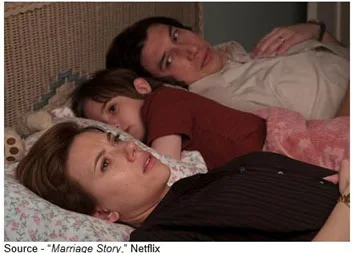
Moving Streaming to the Next Stage of Global Service
“Fathers were expected to be silent and absent and unreliable and selfish and can all say we want them to be different. But on some basic level, we accept them.” – Nora Fanshaw, “Marriage Story,” Netflix, 2019
Some/most things you get into with your eyes wide open but not exactly what it’s really going to be like … really.
Take marriage or your cable contract.
Look back on marriage after 20, 30, or more years and you tell yourself it’s been good, whole lot different than you imagined but … good (we hope).
Look back on 2, 3, 5 years of your cable contract and jeezz!
No love, no flowers, no kind words (if they talk to you at all); just a big, bigger bill telling you how good it’s gonna be.
Actually, what ours seemed to be telling us was why are you using our expensive stuff – on our schedule – when there are choices?
 So, we blew off the gazillion channels, upped our internet speed with them and went on the hunt for just the stuff we wanted to watch.
So, we blew off the gazillion channels, upped our internet speed with them and went on the hunt for just the stuff we wanted to watch.
Boy, did we show them!
Of course, Comcast figured out folks wanted their content and they wanted it anywhere, anytime, any screen.
So, they extended their internet connectivity reach and bought Sky TV.
They already had content with NBCUniversal, so it wasn’t difficult to repackage the stuff and called it Peacock … catchy.
When people say they’re streaming their content, their first experience is usually with Netflix.
Then, women seem to like things like free shipping with streaming video on the side, so Amazon Prime entered the picture.
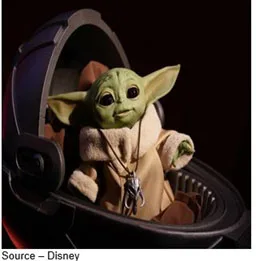
If you have kids, Disney + is certainly priced right but throw in Hulu and ESPN+ and it’s a great bundle.
Especially when the world loves Baby Yoda.
Holy crap, you’re back where we started!
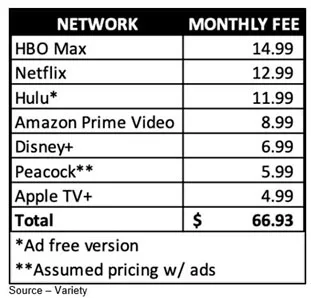
And that’s only the tip of the new, better, more unique streaming bundles that are appearing around the globe.
You know—BritBox, DAZN, MUBI, DAFilms, Joyn, Salto, CanalPlay, Hotstar, Voot, Spuul, Hayu, Stan, THR3, Telefe, Tencent, iQiyi, Youku and all of the rest.
Governments around the globe played hardball with the U.S. streamers, saying if you want to entertain our citizens, 30 percent of the content streamed has to be produced locally.
Sure, they kicked and screamed, claiming it would ruin the quality of their streaming service … or something to that effect.
It turned out there were good/great creative writers, producers, shooters and editors everywhere and it was less expensive producing locally.
In addition, people really liked the imports, even with bad dubbing and subtitles.
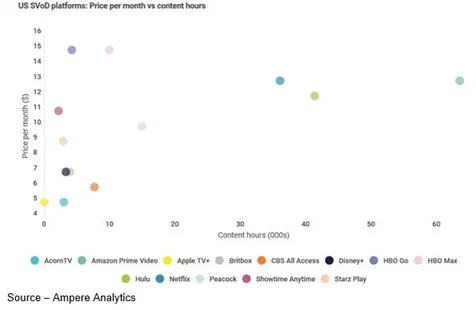
According to Allan McLennan, chief executive of PADEM Media Group, one of the first problems folks encountered with their new subscription service freedom was that people didn’t want just one to three services, they wanted them all.
As a result, instead of one tidy (yes, big) bill, they’re now juggling credit card charges for five to seven and sometimes even more services.

“Amazon, Google’s YouTube and Roku have solved the problem for a growing number of streaming services and consumers by offering the subscription services to consumers and taking care of the billing/payment activity,” said McLennan.
With Amazon, that puts streamers in front of 150M Amazon Prime global customers. Roku opens opportunities with 32+M users and more as they begin to expand internationally.
“For smaller, younger streaming services that also means the focused UX also has access to a valuable asset … the consumer’s data,” McLennan added.
But personal data isn’t an asset Netflix, Apple and Disney are willing to share.
Netflix uses the data to select and program shows.
Disney will do the same, in addition to offering subscribers with other products/services in the Disney universe.
And Apple … well, they’re Apple.
In addition to the ad-free services, there are lots of people who don’t mind viewing a few ads as long as the price is right … free.
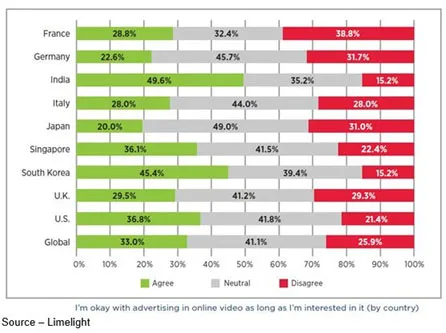
To ease the financial pain for consumers, Pluto TV; Tubi, Xumo; Vudu; Plex; Rakuten TV; Amazon’s IMDb and many more around the globe, offer ad-supported streaming service.
The nice thing is, they’re different from the old pay TV formula.
You know, a 5-10-minute bundle of ads for every 20 minutes of entertainment you watch.
The streaming services’ digital algorithms (SVOD and AVOD) track your viewing habits to learn not only what you view, but how you view it – what screen you’re using, how many episodes at one sitting, etc.
The “free” entertainment services also “learn” which ads you respond to, so viewers have a more complete, customized experience.
McLennan emphasized that the discovery/recommendation algorithms constantly improve content and ad offerings to personalize people’s viewing by enriching the entertainment experience.
“As a result,” he added, “they are able to deliver ads the viewer is interested in seeing so people will finally find the ads are as interesting as the content.
“At this time,” McLennan noted that, “AVOD streamers aren’t overloading the viewer with ads but point out that the ads can be more aligned with the individual’s interest, so the engagement is more valuable to the advertiser.”
Translation – ad placements are more expensive because it is quality of the customer contact rather than quantity of eyeballs.
Working closely with digitally aware advertisers, the streaming ads are shorter, and the ad slots have fewer ads, typically three-five minutes.
Confident that people really didn’t hate ads but rather the mind-numbing volume of ads every 20 minutes, Comcast acquired Xumo while Fox bought Vudu from Walmart.
In addition, two investment firms snapped up 64 percent of Univision, and ITV will probably take control of Australia’s Seven West Media.
The only folks we don’t really understand is YouTube at $50 a month.
First, they take you back to your old cable — 70 channels — plus a crap load of ads.
At the same time, they and their parent (Google) scrape your data to sell to “others”… and charge you for the privilege.
Helluva’ deal!

However, after the sticker shock and freedom of random search and discovery for just the right content at the right time wears off, a new bundle model will probably return because people will quickly get tired of searching for specific content across a myriad of service apps.
More importantly, on the business side, services have to find a way to minimize churn–people dropping a service just because they have viewed all of the segments of their favorite show and have to wait nine months or a year until the new visual story series has been produced and released.

Churn is the same concern/expense for every business and as every CEO knows, it is much more profitable to keep an existing customer rather than get a new one, which generally requires prying them away from the competition.
“The market is increasingly splintered,” McLennan observed, “and that will have to change; but it will take time because there are too many VMPDs (multichannel video programming distributors) available trying to convince streaming services they are best for them while they are all chasing after the same consumers.
“No one has found the formula for an incremental value-add for both the streaming services and the consumers that is economical and scalable,” he added.
The bigger challenge for OTT is that streaming is global while traditional services are regional or national.

For the industry to reach and surpass current industry projections ($688B plus by 2024), national streaming package providers will have to develop international exchange arrangements. Perhaps global video data exchange guidelines can be established just as was done to make the internet the ubiquitous communications tool around the globe.
It shouldn’t be too difficult.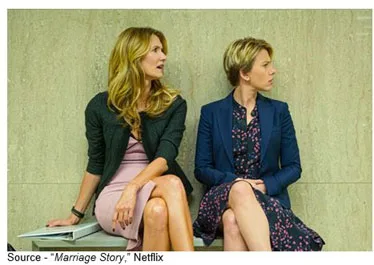
All we have to do is get all of the participants to get together and listen to/agree with Nora Fanshaw who said, “We’re interested in what you want to do. What you’re doing is an act of hope.”
Then, get the job done so everyone benefits … including the consumer.
If we don’t, people may decide it’s more rewarding to read books or play board games with other people, or just have a quiet conversation with someone.
###
Andy Marken – [email protected] – is an author of more than 700 articles on management, marketing, communications, industry trends in media & entertainment, consumer electronics, software and applications. He is an internationally recognized marketing/communications consultant with a broad range of technical and industry expertise especially in storage, storage management and film/video production fields. This has led to the development of an extended range of relationships with business, industry trade press, online media and industry analysts/consultants.